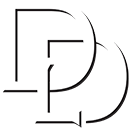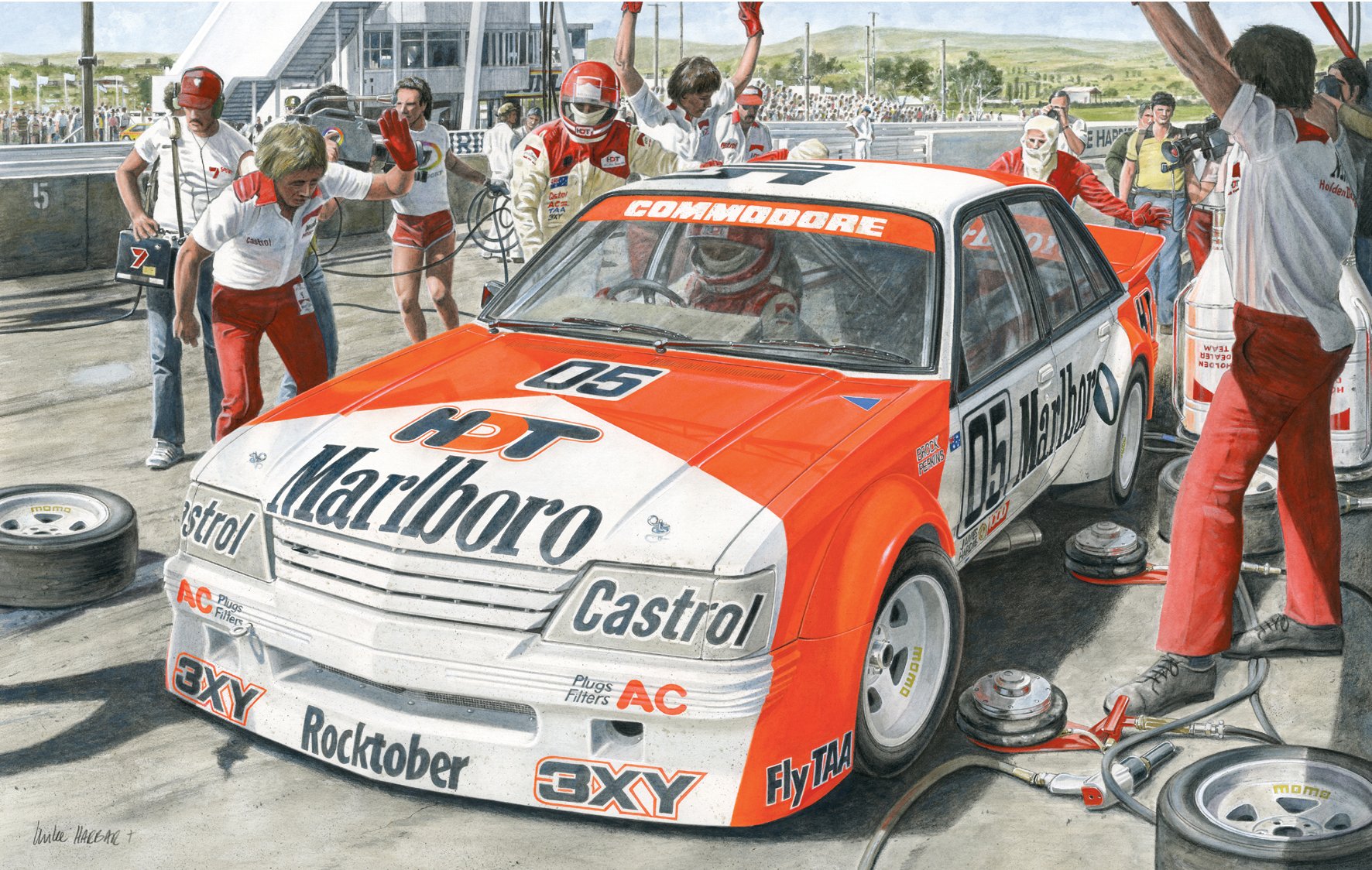Automotive illustrator Mike Harbar has become passionate about American muscle cars, like this 1966 Shelby 350GT Hertz competing at the Phillip Island MotoGP circuit
Drawing cars as a job is unconventional, but ex-pat Brit, Mike Harbar, wouldn't have it any other way. As one of few automotive artists making a full time living from his craft in Australia, one can count Harbar’s colleagues on one’s fingers.
Growing up in West London, his early association with motorcars proved inauspicious. He recalls his father's Ford Escort and Cortina, but his uncle's Ford Capri outclassed dad’s company cars.
"We didn't associate with anybody who owned a fancy car, but I always remember the first time I saw a Jaguar E-Type. I thought, 'Wow, that's fantastic'," Harbar said.
The Brit has drawn cars since he could hold a HB pencil.
"I remember always drawing concept cars and motorcycles in the back of my school exercise books," he said.
One of Mike Harbar's boyhood heroes, Barry Sheene on his winning Suzuki RG500
Combining his favourite subjects at school, Harbar aimed to make a career in art and design, so he attended Epsom School of Art and Design in 1986 gaining an Art Foundation Course Diploma, before moving on to De Montford University (Leicester Polytechnic), graduating in 1989 with a BA (Hons) in Product Design.
Harbar later worked as a graphic artist for an oil company in London, and this is where the Aussie connection takes place. Harbar met his Australian wife, Cathy, in 1989.
"We spent two years in the UK together," Harbar said. "Cathy's visa was running out though, so in 1992, we spent a year in Australia. I learned about the country, met the in-laws, and investigated the automotive scene.
"A year later, my visa was expiring, too, so we got married under a palm tree and went back to the UK. I worked for the London Underground drawing manuals, then I worked for a product design company for four years in rural Suffolk, designing, model making, and illustrating fibre optic products. Then Pro Engineer (a 3D computer program) came in and took away much of my work. So, rather than getting a proper job, I made my own and have drawn cars for a living ever since.
"I got freelance illustration work and the occasional car commission and published my range of black and white automotive prints, ranging from the AC Cobra 427 to the VW Beetle. Then I visited classic car shows and found an agent who bought my prints. A week later he asked for more and things went from there."
Classics from Britain remain a favourite, like this Aston Martin DB5 as used by James Bond in Skyfall
It seemed inevitable Harbar would move to the 'Promised Land', which he did in 2000. He took a risk – fewer people Down Under meant earning a living from art would stretch him, but it worked.
"It’s a smaller market, but there are fewer auto artists, so less competition, and the car culture is very enthusiastic here," Harbar said.
Harbar started strongly after landing in Australia, becoming known through visiting car clubs and attending events.
As an artist, it is not in his nature to cold sell, but his livelihood depends on it, so Harbar does it anyway.
"The art is the easy bit for me. The hardest part is selling it. I market the art, where I could spend that time drawing. But what is the point of creating all this if I can't sell it? I would rather someone else sell for me, so I can concentrate on doing what I enjoy doing most: drawing."
Soon, Harbar received commissions from private clients, and before long, corporate Australia jumped on his train. Holden Racing Team and Ford Performance Vehicles commissioned works, as have The Sir Henry Royce Foundation, DaimlerChrysler, and Australia Post.
Harbar has exhibited his art at the Adelaide Clipsal 500, Melbourne Motor Show, RACV Club, Australian Formula One Grand Prix, Phillip Island Classic Festival of Motorsport, and Motorclassica, while in the UK, events have included the Land Speed Record exhibition at Brooklands, the Birmingham Classic & Sports Car Show, and Goodwood Revival.
Harbar fell in love with the heroes of his adopted home, including this Holden VK Commodore, raced by the Holden Dealer Team at Bathurst
Harbar's heaving bookshelves testify to his varied artistic influences. His favourites in the automotive art field include Geo Ham, Gordon Crosby, and Michael Turner. He has been a member of the Guild of Motoring Artists in the UK.
His repertoire is vast, ranging from Australian and American muscle cars and racing machines to classics from his homeland.
"My favourite subjects are Aston Martin and Jaguar, but Bugatti and Bentley are up there as well," Harbar said.
But since landing Down Under, Harbar has fallen in love with Phase III Falcons, Toranas, Monaros and other classic Aussie racing legends that pounded the blacktop at Bathurst, Sandown, and Phillip Island back during the 1960s and 1970s. He also cultivated a close working relationship with racing icon, Harry Firth, which bore fruit with a line of Bathurst Legends artworks.
The affable Brit has a sense of humour. All his artworks contain his hidden signature trademark: a church spire in deference to his faith and love of the English countryside.
He works with several mediums, including charcoal, pen, watercolour, and marker, but his favourite is the grey lead pencil.
Harbar begins a new commission by drawing the outline and detail of the car, then uses a range of lead pencils from 4H (hard) to 4B (soft) to produce varied tones and textures. He is skilful and accurate, but can also be “loose”, making the pencils dance. After many hours, the subject emerges from the paper. For a splash of colour, Harbar paints watercolour washes over the lead pencil, an unorthodox method, but it works.
This is the usual way Harbar illustrates one-off commissions. The only limit is the customer's imagination and budget.
A private commission of a boat-tail Delage along with the owner’s cat, George
"For a special commission, I mainly work from photos, so customers from anywhere in Australia or around the world can send me a picture and I work from that.”
Harbar can incorporate a favourite view, a house, or even a pet, in a car portrait. Anything’s possible.
A more economical route involves personalising an existing print with a colour, numberplate, and other factory-fitted options specific to an owner’s car.
One of the most unusual commissions drawn by Harbar is the 1997 ThrustSSC (Supersonic Car), which holds the World Land Speed Record at 763.035 mph (1227.99 km/h) over the measured mile, breaking the speed of sound. Using his technical illustration skills, Harbar drew the car while technicians constructed it. Taking over 100 reference photos, consulting CAD drawings, live sketches, and interviewing the engineers, Harbar completed the illustration in record time and created reproduction prints to help fund the successful Land Speed Record project.
Harbar has hundreds of prints in his portfolio and has contacts all over the world.
Mike Harbar drew this commission of World Land Speed Record holder, ThrustSSC, as its technicians built it
"I have completed about 200 commissions for satisfied customers worldwide, including the UK, USA, Canada, Germany, Switzerland, and India."
Harbar has also had his artwork featured in books The Brescia Bugatti by Bob King, and Aston Martin: Power, Beauty and Soul and A Le Mans Diary by David Dowsey.
It's easy to see Harbar is restless and has big plans.
"In the future, I want to draw cut-away views and classic wooden boats, produce 3D artwork and sculpture and radiator mascots, and illustrate a children's book."
If only he had two pairs of hands and more hours in the day…
See more of Mike Harbar’s artwork at Classic Lines Artist.






